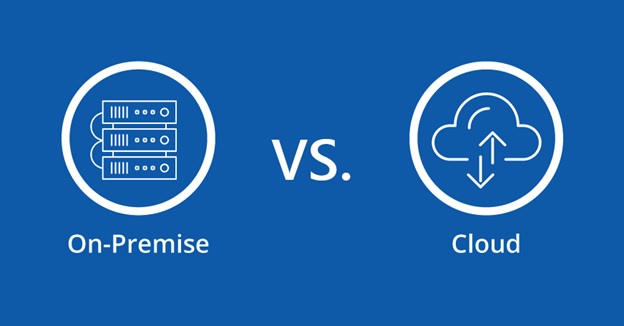04.12.2024
CompTIA A+ Certification: Your Comprehensive Guide

Posted by Marbenz Antonio on October 4, 2022

The ideal infrastructure for deploying virtual apps and desktops is being considered by many organizations. Essentially, there are two options: on-premises solutions, cloud solutions, or a combination of both. Is one preferred over the other, on-premises or cloud? VDI on-premises, which allows IT departments control over their environments, necessitates routine maintenance and can be challenging to scale up. Desktop as a Service (DaaS) models for cloud computing lower the cost of physical infrastructure and IT complexity.
Each infrastructure has benefits and drawbacks. The needs of your firm and a few other considerations will determine which model is appropriate for your business. In this article, we’ll examine some of the most important parts to take into account when choosing between on-premises computing and the cloud.
Both on-premises and cloud computing have significant advantages that can be used to meet the unique requirements of your company.
| On-premises | Cloud | |
| Resources deployment | Resources are deployed in-house. | Resources are deployed on a third-party server. |
| Cost | Requires upfront investment. | Most cloud providers use a pay-as-you-go model. |
| Scalability | The use of physical servers limits the scalability of this model. | Scalability is one of the main advantages of cloud deployments. The cloud makes it easy to add more resources on demand. |
| Data security | Enables the organization to control all data and deploy preferred security restrictions. | Control of data security is offloaded to the cloud provider with the ability for organizations to add specific security policies. |
| Compliance | Regulations often require regulated industries to keep data on-premises. | Cloud providers keep the environment constantly updated with compliance regulations, especially data privacy. |
On-premises, computing is a computer approach where software and data are kept and used on actual company-owned hardware. Datacenters, business servers, and networking systems are the most typical uses. The phrase also refers to software and applications created internally by a company.
On-premises deployments are not suitable for everyone for some reasons. When choosing your infrastructure, take into account the following:
For many different types of enterprises, an on-premises infrastructure may be the answer. Think about these important use cases, which can necessitate or justify maintaining hardware.
In cloud computing, a different company—the cloud provider—provides servers and data storage services. The upkeep and security of the cloud environment are a shared duty between businesses and cloud providers. The company is in charge of managing the data and services they utilize, while the cloud providers typically take care of infrastructure and storage upkeep.
Most cloud service providers offer a combination of the three basic types of cloud computing models, which there are.
Other technologies are usually present in cloud computing environments:
Many businesses may find that moving to the cloud is the best course of action since it offers the flexibility required to manage complicated settings properly.
What advantages do moving to a cloud computing environment offer? To name a few:
The simplicity of provisioning is one of the cloud’s top benefits. Instead of taking days or weeks, new resources and storage, for instance, can be added instantly. This adaptability enables businesses to swiftly scale up or down in response to sudden changes in demand.
One more affordable choice is the cloud. To begin with, moving to the cloud has no up-front infrastructure costs. Pay-as-you-go pricing is the norm among cloud service providers. It eliminates idle equipment costs since you only pay for the resources you use, not for the resources you already have. Finally, knowing that you’ll only be charged for what you use will help you more accurately budget the expense of your migration. To get you started, check out this excellent calculator.
Systems administration, particularly security-related activities, is made simpler by cloud computing models’ abstraction of the hardware’s compute, storage, and network layers. Administrators can employ the strong security controls most cloud providers have in place to restrict access and evaluate vulnerabilities.
High availability is another benefit of moving to the cloud. Most cloud providers promise at least 99.9% uptime in their service agreements if your workload and regular tasks demand that you never experience downtime.
Cloud security operates on a shared responsibility basis. While clients are in charge of the security in the cloud, such as limiting access to data, the network, and storage, service providers look after the security of the cloud resource.
Strict security controls are often in place at cloud providers to identify vulnerabilities and protect the infrastructure. In a cloud setting, it’s also simpler to run security updates, compliance updates, and other patches. One of the ways switching to the cloud might improve security is due to its flexibility.
Here at CourseMonster, we know how hard it may be to find the right time and funds for training. We provide effective training programs that enable you to select the training option that best meets the demands of your company.
For more information, please get in touch with one of our course advisers today or contact us at training@coursemonster.com
